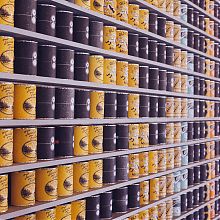Recombinations and Configurations
Editors' Note
Contributors
The Wooden Brain: Organizing Untimeliness in Marx’s Capital
Amanda Armstrong reads Marx’s famous figuration of the dancing table, situating it historically so that we might glean something new about Capital, Volume I and capital itself: “Capital is a splintered text, pulled apart by the varied strains of materialism that course through its pages: the wooden table figures forth the text’s non-identity with itself.”
To Compare Otherwise: Immanence, Totality, and the Crisis of Capital
What does it mean to “compare?” Like capital itself, comparison is “simultaneously everywhere and nowhere,” says Ma. In this essay she pursues a method by which the categories and methods of comparison might utilize the same dialectical thinking with which Marx analyzes capital. Mobilizing Marx’s concept of value-formation, Ma describes a mode of analysis that employs the totalizing and systematizing functions of comparison for a critique of global capital.
Mourning the Loss of a Communist Revolution that Didn’t Happen: The Undead Historicity of Italy’s Anni di piombo in Zombi 2, Year of the Gun, and Arrivederci amore, ciao
This comparative analysis of three popular films about Italy’s Red Brigade focuses on how the films articulate the paralysis of the political left in the 1970s. Working through Jameson and Lacan, Nagypal’s essay argues that these films represent the Italian Left allegorically through figures of the living dead after its defeat. Moreover, the piece sees a critical imaginative capacity in the act of mourning.
Roberto Arlt’s Urban Montage: Forms of Combination in a Peripheral Metropolis
Arguing that montage is a kind of “conceptual map of unevenness of global modernity,” Mulder reads Roberto Arlt’s The Seven Madmen (1929) and The Flamethrowers (1931) in terms of a form of montage, a way of arranging “contradictory elements in a dialectical manner that reveals their social mediation.”
Black as the New Dissonance: Heidegger, Adorno, and Truth in the Work of Art
Suther contrasts Theodor Adorno’s idea of “truth” in the work of art with Martin Heidegger’s The Origin of the Work of Art. Ultimately, the piece argues for a materialist aesthetics through Adorno’s account of modernism, suggesting that the “dissonance” intrinsic to modernist works of art activates the intellect of the beholder, disclosing the contradictions of capital.
Book Reviews
The Sidings of History
Laura Krughoff reviews China Miéville’s October.
The Anxiety of the Contemporary
Justin Raden reviews the Postmodern/Postwar — and After, edited by Jason Gladstone, Andrew Hobarek, and Daniel Worden.
